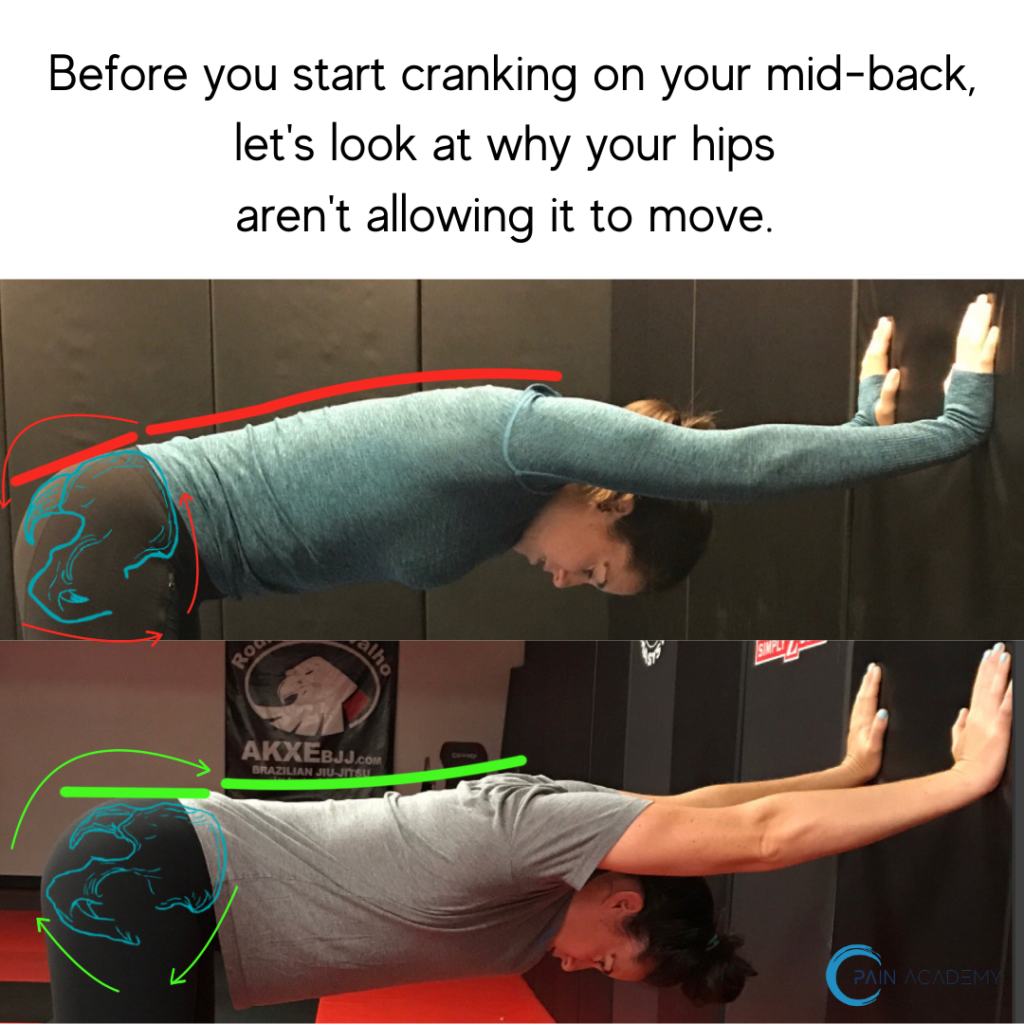
Every skeletal muscle comes with an opposite.
For every flexor, there’s an equal and opposite extensor.
It’s this balance of opposites that keeps us upright and gives us the ability to flex, extend, and rotate.[1]
This balance of opposites shows up when the flexors shorten the extensors lengthen, and vice versa, when extensors shorten, the flexors lengthen.
But what happens when a muscle can’t shorten or lengthen fully anymore?
Since skeletal muscles work in opposites, how does that affect the opposing muscle group and the rest of the body?
Let’s look at how her hips not being able to flex prevent her mid-back from extending—which we see clearly in the top photo. To be fair, this post could be about how all of her load joints are impacting her ability to move, but for this post – let’s focus on the hips for a simple entry point.
Since her hips can’t flex well, this affects her ability to tip her pelvis anterior into extension. Without her pelvis going into extension, the spine has a nearly impossible task of going into extension by itself without the support angle of the pelvis.[3]
Her short hamstrings not being able to lengthen create further restriction in her ability to move her pelvis which is another way to look at how knee and hip muscles are creating range of motion issues in her spine.[4]
Due to this pelvic/hip/knee dysfunction, her spine will feel tight, stiff, and “blocked”.
It feels restrictive not because the mid-back is the problem – because the rest of her body forces her mid-back to stay flexed when it’s trying to extend.
After some time improving function with her ankles, knees, hips, and pelvis, you can see in the photo on the bottom how her mid-back can now go into extension – because the rest of the body helped it do so and allowed it to move again.
Maybe your mid-back is tight because needs some attention, so show it some love and work on it. But remember, nothing works in isolation. If you just crank on your mid-back without looking at why it needs to be cranked on in the first place, chances are tightness will come back or you’ll ask something to move without support and risk of injury goes up. #holistic #movement #therapy .
Sources cited below.
- Kendall F, et al. Muscle testing and function with posture and pain. Baltimore: Lippincott Williams & Wilkins; 2005.
- Solberg G. Postural disorders & musculoskeletal dysfunction. Diagnosis, prevention and treatment. Philadelphia: Elsevier Churchill Livingstone; 2008.
- Czaprowski D., Stoliński Ł., Tyrakowski M., Kozinoga M., Kotwicki T. Non-structural misalignments of body posture in the sagittal plane. Scoliosis Spinal Disord. 2018;13:1–14.
- Gajdosik RL, et al. Influence of hamstring length on the standing position and flexion range of motion of the pelvic angle, lumbar angle, and thoracic angle. J Orthop Sports Phys Ther. 1994;20(4):213–219.